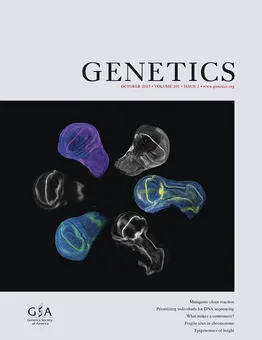Of Fruit Flies and Renoirs

In this Genetics cover story image, CRISPR/Cas9-based transcriptional activation in vivo in the Drosophila wing disc.
Evolutionary developmental biologist Ben Ewen-Campen '06 is the co-author of a recent Genetics cover story on a gene-editing technique demonstrated on living fruit fly cells, a first. Ewen-Campen also provided the cover image (left).
Gene transcription is the process by which genetic information is copied from DNA to RNA, resulting in a specific protein formation. CRISPR/Cas9 is a gene-editing technique that can target and modify DNA with great accuracy and can be used in seemingly any type of cell, including those of fruit flies.
In "In Vivo Transcriptional Activation Using CRISPR/Cas9 in Drosophila," Ewen-Campen and his colleagues demonstrate "the ease and effectiveness of the dCas9-VPR system for activating target genes both in Drosophila cells and in vivo." They also provide the first demonstration of Cas9-based activation in vivo, demonstrating that "this strategy holds great potential for overexpression studies." View the full study.
Ewen-Campen also recently appeared, with some fellow Swat biology alums, in the Boston Globe for participating in a protest outside of Boston's Museum of Fine Arts. The playful protesters demanded that the museum remove their Renoirs and replace them with better paintings. Ewen-Campen says it is nothing personal. Read the full article.
Ewen-Campen graduated with honors from Swarthmore with a major in biology and a minor in English literature. He completed a Ph.D. in evolutionary development biology at Harvard, where he currently works in the Department of Genetics' Perrimon Lab.



